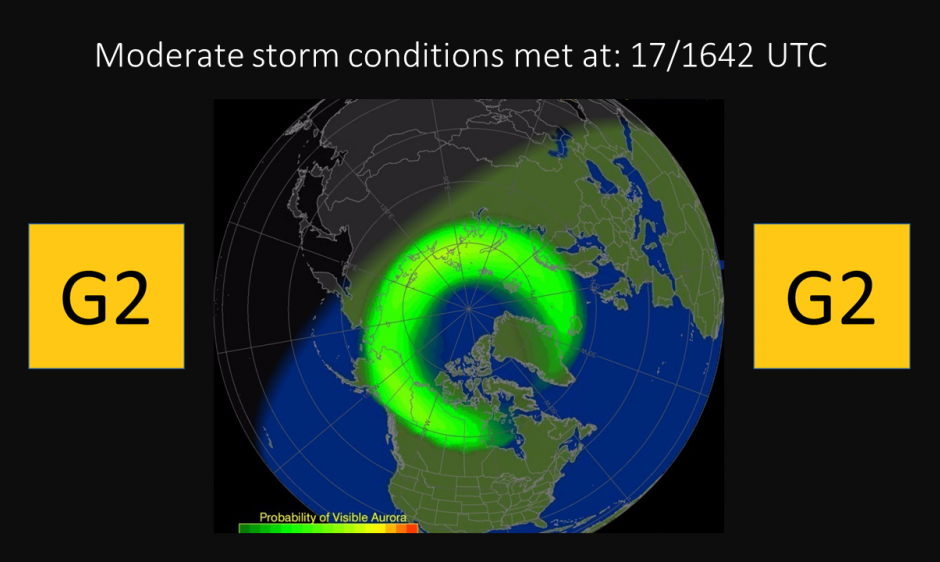
A Solar Storm Is Amping Up the Northern Lights

After a coronal mass ejection from the sun hit Earth's magnetic field on Sunday (July 16), space weather forecasters predict that geomagnetic storms may cause some intense auroras this evening (July 17).
Conditions of moderate geomagnetic storms could be seen as far south as 60 degrees latitude, according to a statement by the Space Weather Prediction Center run by the National Oceanic and Atmospheric Administration. The class G2 magnetic storm (a moderate storm) was triggered by solar particles ejected from a coronal mass ejection on Friday (July 14), SWPC officials said in an update.
According to the website Spaceweather.com, which regularly tracks space weather events, observers across parts of Canada and as far south as the northern U.S. states of Washington, Wyoming and Minnesota may be able to see auroras from the amplified displays. Auroras are typically visible near Earth's polar regions. They are known as as aurora borealis in the Northern Hemisphere and aurora australis in the Southern Hemisphere. But during geomagnetic storms, the auroras can be amplified and be visible from a wider region. In fact, Spaceweather.com reported that visibility in the Southern Hemisphere was even better than in the north, with auroras visible in New Zealand. [The Best Places to See the Northern Lights]
Local meteorologist Mark Tarello shared views of the northern lights over Minnesota on Sunday night.
Space meteorologist Tabitha Skov has shared this five-day outlook, showing the geomagnetic storm's activity through Wednesday (July 19).
Editor's note: If you have an amazing aurora photo you'd like to share with us and our news partners for a possible story or image gallery, please contact managing editor Tariq Malik at spacephotos@space.com.
Email Hanneke Weitering at hweitering@space.com or follow her @hannekescience. Follow us @Spacedotcom, Facebookand Google+. Original article on Space.com.
Breaking space news, the latest updates on rocket launches, skywatching events and more!
Join our Space Forums to keep talking space on the latest missions, night sky and more! And if you have a news tip, correction or comment, let us know at: community@space.com.

Hanneke Weitering is a multimedia journalist in the Pacific Northwest reporting on the future of aviation at FutureFlight.aero and Aviation International News and was previously the Editor for Spaceflight and Astronomy news here at Space.com. As an editor with over 10 years of experience in science journalism she has previously written for Scholastic Classroom Magazines, MedPage Today and The Joint Institute for Computational Sciences at Oak Ridge National Laboratory. After studying physics at the University of Tennessee in her hometown of Knoxville, she earned her graduate degree in Science, Health and Environmental Reporting (SHERP) from New York University. Hanneke joined the Space.com team in 2016 as a staff writer and producer, covering topics including spaceflight and astronomy. She currently lives in Seattle, home of the Space Needle, with her cat and two snakes. In her spare time, Hanneke enjoys exploring the Rocky Mountains, basking in nature and looking for dark skies to gaze at the cosmos.
